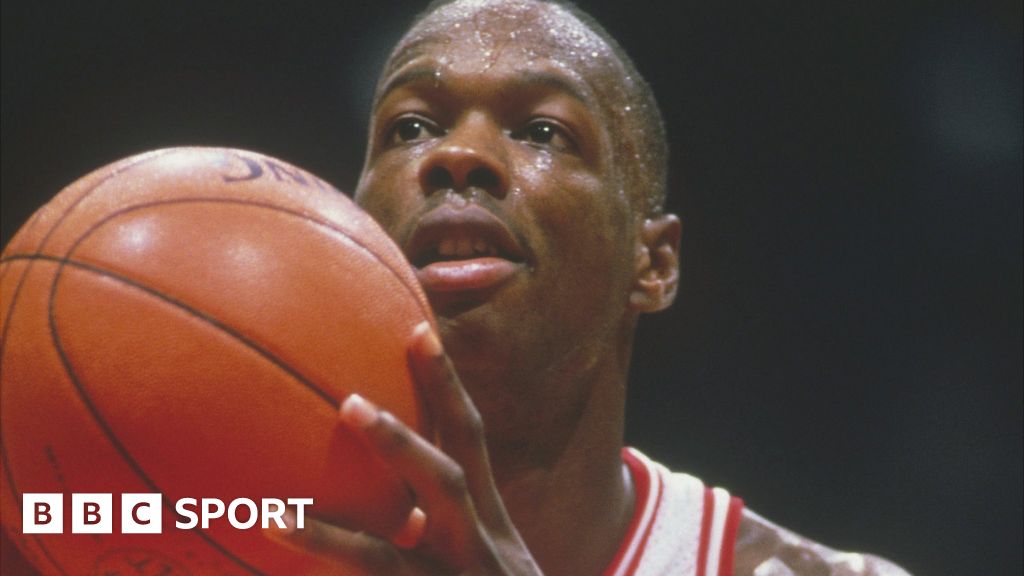Maryland’s chief medical examiner attributed Bias’ death directly to cocaine. He said it had “interrupted the normal electrical control of his heartbeat, resulting in the sudden onset of seizures and cardiac arrest”.
Tribble was put on trial on charges of supplying the cocaine that night, but was found not guilty.
“I love Lenny Bias,” he said outside the courtroom. “I always have, always will.”
In 1990, three years later, Tribble would be convicted for 10 years for large-scale cocaine dealing.
Tribble’s conviction was just one of millions in the wider ‘War on Drugs’ that dominated the policies of successive US governments.
Between 1980 and 2009, the adult arrest rate for drug possession or use increased by 138% in the United States,, external with the majority of the rise in the first decade of that 30-year period.
Bias’ death, at his physical peak, with a future laid out before him, was part of the justification for harsher sentences for smaller amounts of certain drugs.
“Len Bias, he was the man – he was going to be the next superstar,” says historian David Farber, author of War on Drugs: A History.
“I grew up in Chicago, I grew up with Michael Jordan, but there were people saying ‘he’s going to take Jordan’. There was fear about Bias going to the Celtics, he was that good.
“The speaker of the House of Representatives at the time of his death was Tip O’Neill, who could see there was a mid-term election coming up in November 1986.
“He understood a whole lot of people were terrified that this superstar athlete, this extraordinary fit young man had fallen prey to a cocaine overdose. O’Neill represented Boston, was a Celtics fan. It was really good politics for him to pay attention to the specificity of Len Bias’ death.”
O’Neill, a Democrat, realised his party could not afford to be seen as weak on an issue that was seeping into the psyche of American voters.
“Time magazine and Newsweek were outlets that middle-class Americans would read at the time. They had massive circulations at this point and had begun to pump crack as the new American nightmare,” says Farber.
“Crack was not something whites, the middle class and suburban youths were using either. But it was a great ‘what if?’.
“Bias didn’t use crack, he died of a powdered cocaine overdose, but that’s not what people perceived at the time.”
O’Neill was the driving force behind the Anti-Drug Abuse Act that became more draconian the more it was discussed.
“This bill started to become a bidding war around who could punish drug dealers and drug users more,” explains Farber.
“Usually you negotiate – Labour and Capital, they find a way to fight and compromise.
“But on this there was no negotiation, it was like, ‘Let’s put them away for five years? No, let’s put them away for 10 years! Let’s reduce the amount of crack that puts you in jail from 100g to 50g! Actually, how about 10g?’
“Len Bias was in the centre of all of this. Here’s this superhero who becomes an emblem of what drug abuse can do to the best of us.”
In October 1986, a little over four months on from Bias’ death, President Ronald Reagan signed the Anti-Drug Abuse Act into law in the White House’s East Room.
The act specified amounts of certain drugs that would trigger a prosecution for possession. For crack cocaine, the level was set at 5g. For powdered cocaine – the more expensive drug that had killed Bias – it was set at 500g. The minimum sentence for a conviction in either case was five years without parole.
It also set a minimum 20-year sentence for anyone convicted of dealing drugs that caused death or serious injury.
“This legislation is not intended as a means of filling our jails with drug users,” Reagan told the press.
But its effect was exactly that.
In 1986, the US prison population stood at 522,064. Ten years later, it was more than 1.1 million., external
“It just started to take young people and throwing them into prison in massive numbers,” says Farber.
“Poor communities – in particular poor black communities – were hit really hard. Crack was a drug that was tailor-made for poor people because it was cheap, it created a really strong and immediate high, and it was reproducible again and again.
“In the United States, we talk about a carceral state, a state built around putting people in prison and that starts with the crack-cocaine hysteria.”




